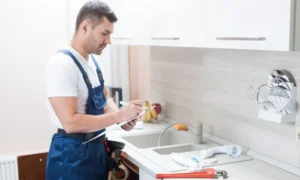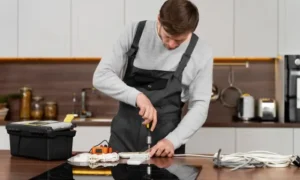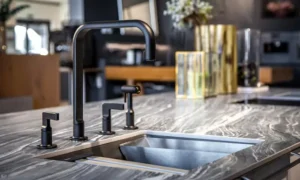How to Seal Granite Countertops: Ultimate Guide in 2024
Granite countertops are not just a functional element in your kitchen; they are a statement of luxury and timeless beauty. However, to maintain their aesthetic appeal and durability, it is crucial to understand the significance of sealing granite countertops. In this guide, we delve into the art of preserving the natural splendor of granite through proper sealing techniques.
As experts in granite care, SF Marble And Granite Inc brings a wealth of knowledge to guide you through the process of sealing granite countertops effectively. Our commitment is not just to provide a service but to empower you with the knowledge and tools needed to maintain the allure of your granite surfaces for years to come. Join us on this journey as we explore the ins and outs of How to Seal Granite Countertops, and discover the transformative impact that expert care can have on your living space.
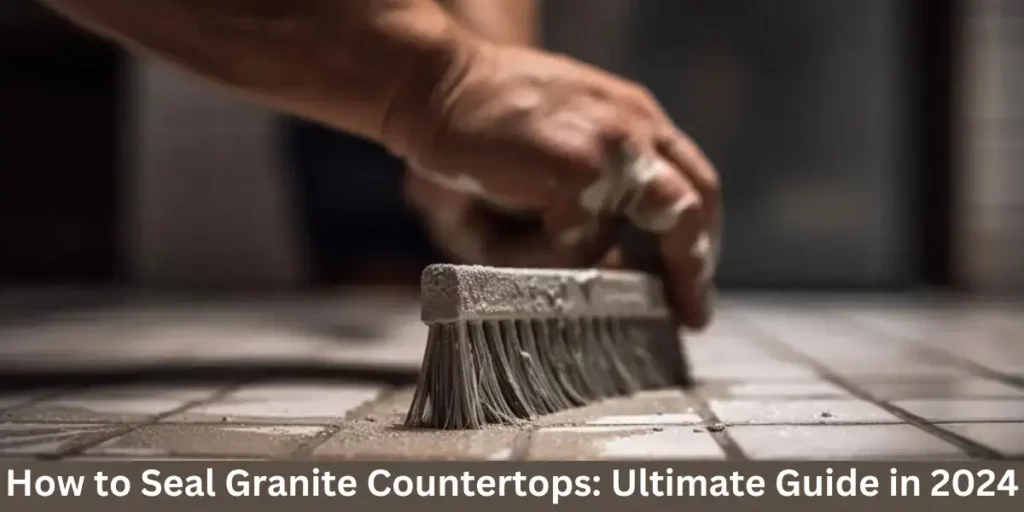
How to Seal Granite Countertops
Granite countertops, with their natural beauty and durability, have become a popular choice for kitchens and bathrooms. However, to ensure these surfaces stand the test of time and retain their original splendor, it’s crucial to understand why sealing granite countertops is a vital step in their care.
Enhancing Longevity:
Sealing granite countertops serves as a protective barrier, enhancing their longevity. Granite is a porous material, meaning it has tiny openings that can absorb liquids over time. Sealing acts as a shield, preventing water, oils, and other substances from seeping into the stone. This, in turn, guards against internal damage, preserving the structural integrity of your countertops installation for years.
Aesthetic Preservation:
The natural allure of granite lies in its unique patterns and colors. Unsealed granite is susceptible to discoloration, fading, and dulling over time due to exposure to various elements. By sealing your countertops, you not only protect them from damage but also enhance and preserve their aesthetic appeal. Sealed granite maintains its vibrant colors, glossy finish, and overall visual impact, ensuring your kitchen or bathroom remains a showcase of elegance.
Stain and Spill Protection:
Granite’s porosity makes it susceptible to stains from liquids such as wine, coffee, and oils. Sealing creates an impermeable barrier, preventing these substances from penetrating the surface. This is particularly crucial in spaces like kitchens where spills are inevitable. By effectively sealing your granite countertops, you mitigate the risk of stubborn stains, making them easier to clean and maintain.
Hygienic Benefits:
Sealing not only protects against visible stains but also inhibits the growth of bacteria and mold within the stone. This is especially important in areas like kitchens where hygiene is paramount. Sealed granite countertops contribute to a healthier living environment by resisting the development of harmful microorganisms.
Understanding the benefits of sealing granite countertops is essential for anyone looking to maintain the longevity and aesthetic appeal of these stunning surfaces. By incorporating this protective measure, you not only safeguard your investment but also ensure beauty of your home. In the next sections, we will guide you through the process of “How to Seal Granite Countertops” effectively, empowering you to take charge of the care and preservation of your granite surfaces.
When to Seal Granite: Guiding Principles for Optimal Protection
Knowing when to seal your granite countertops is a crucial aspect of effective maintenance. The frequency of sealing depends on various factors, including the type of granite you have and how your countertops are used. In this section, we’ll explore the guidelines for determining when to seal your granite, ensuring that you provide optimal protection for these elegant surfaces.
Type of Granite
Different types of granite have varying levels of porosity. Some granites are more absorbent, while others are relatively dense and less prone to liquid penetration. As a general rule, lighter-colored granites may be more porous than darker ones. Understanding the specific characteristics of your granite can help you establish a baseline for when to initiate the sealing process.
Initial Sealing
Newly installed granite countertops typically benefit from an initial sealing to provide immediate protection. This preemptive measure helps fortify the stone against potential stains and spills from the outset. Check with your installer or supplier for recommendations on when to perform the first seal, as it can vary based on the type of granite used.
Usage Patterns
The frequency of sealing also depends on how heavily your countertops are used. Kitchens, where countertops are frequently exposed to spills, oils, and cooking ingredients, may require more frequent sealing compared to a bathroom or other spaces with lower usage. High-traffic areas necessitate more regular attention to maintain the granite’s integrity.
Water Absorption Test
An effective way to determine when to seal your granite is to conduct a water absorption test. Place a few drops of water on the countertop surface. If the water is absorbed quickly, it may be time to reseal. If the water beads up and doesn’t absorb, the seal is still effective. Repeat this test periodically, especially in high-use areas.
Manufacturer Recommendations
Consult the guidelines provided by the manufacturer of the sealer you use. Some sealers have specific recommendations regarding the frequency of reapplication. Adhering to these guidelines ensures that you maintain an effective seal over time.
By considering these factors, you can establish a proactive approach to sealing your granite countertops. Regular assessments, coupled with an understanding of your granite’s characteristics and usage patterns, will empower you to determine precisely when and how to seal granite countertops. In the upcoming sections, we will delve into the practical aspects of “How to Seal Granite Countertops,” providing step-by-step guidance for a seamless and effective sealing process.
Step-by-Step Guide: Mastering the Art of Sealing Granite Countertops
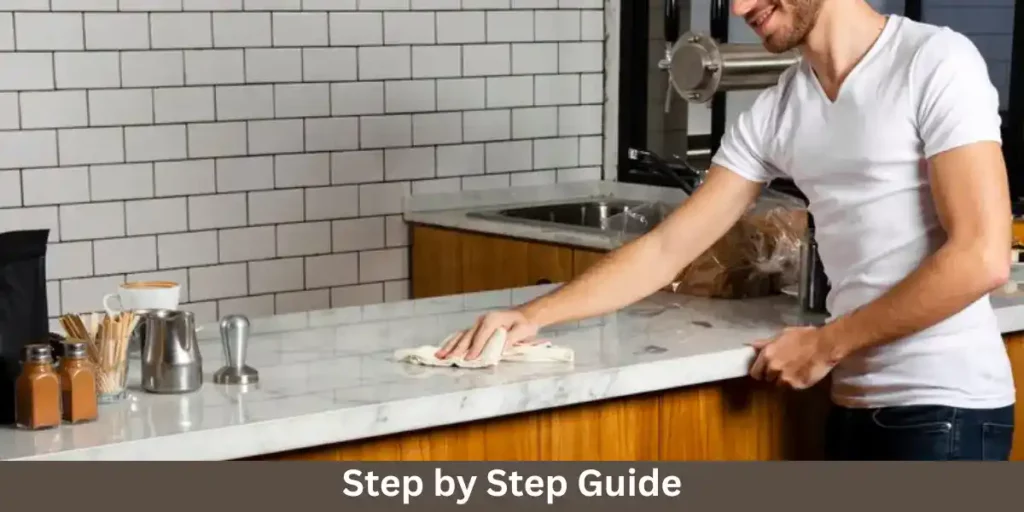
Embarking on the journey of sealing granite countertops is not just a practical task; it’s an art form aimed at preserving the timeless elegance of your surfaces. In this step-by-step guide, we’ll unravel the intricacies of mastering the art of sealing, ensuring that your granite countertops not only withstand the test of time but continue to radiate lasting beauty.
Step 1: Cleaning and Preparing
Before sealing, it’s imperative to create a clean canvas. Thoroughly clean your granite countertops to remove any dirt or residues. This initial step lays the foundation for the sealer to bond seamlessly with the stone.
Step 2: Choosing the Right Sealer
Understanding the diverse range of sealers is key. From penetrating options to those that enhance the natural colors, choose a sealer that aligns with your granite’s characteristics and your aesthetic preferences.
Step 3: Application Techniques
Apply the sealer with precision. Follow the manufacturer’s guidelines for your chosen product, ensuring even coverage. Allow the sealer to absorb, forming a protective barrier within the granite.
Tips for Success:
- Use lint-free cloths or applicators for a smooth application.
- Test the sealer on a small, inconspicuous area first to ensure compatibility.
By mastering each step in this guide, you are not just sealing your granite countertops; you are elevating them to a state of lasting elegance. The art lies not only in the technicalities but in the thoughtful and meticulous approach you bring to the process. Enjoy the enduring beauty of your sealed granite countertop for years to come.
Common Mistakes to Avoid: Preserving Granite, Preventing Pitfalls
While the process of sealing granite countertops is relatively straightforward, certain common mistakes can compromise the effectiveness of the seal and, consequently, the overall health of your granite. In this section, we’ll highlight these pitfalls and guide you on “How to Seal Granite Countertops” without falling prey to these frequently encountered errors.
Neglecting Cleaning Before Sealing:
One of the most fundamental mistakes is failing to clean the granite adequately before applying the sealer. Any residues, whether from cooking oils or cleaning products, can hinder the sealer’s ability to penetrate the stone. Always start with a thorough cleaning to ensure the sealant bonds seamlessly with the granite.
Using the Wrong Cleaning Products:
Using harsh or acidic cleaning agents can damage the granite surface. Always follow SF Marble And Granite Inc’s recommended cleaning products to preserve the integrity of the stone and pave the way for an effective sealing process.
Applying Sealer on a Wet Surface:
Moisture interferes with the sealer’s ability to absorb into the granite. Make sure the surface is completely dry before applying the sealer. This includes not only visible water but also residual moisture trapped in the pores of the stone.
Overlooking Granite Type and Porosity:
Different granites have varying levels of porosity. Using a one-size-fits-all approach to sealing may lead to inadequate protection. Consider the porosity of your specific granite type and choose a sealer that aligns with its characteristics.
Uneven Application of Sealer:
Achieving a uniform application is crucial. Uneven distribution can result in some areas being undersealed, leaving them susceptible to stains and spills. Take your time during the application process, ensuring each section receives an even coat of sealer.
Ignoring Manufacturer’s Instructions:
Every sealer comes with specific instructions from the manufacturer. Ignoring or deviating from these guidelines can lead to suboptimal results. Always follow the recommended application techniques, drying times, and any other instructions provided.
Delaying Sealing After Installation:
Newly installed granite countertops are most vulnerable to stains. Delaying the sealing process increases the risk of permanent damage from spills and everyday use. Initiate the sealing process as soon as recommended by your installer or supplier.
Overlooking Regular Maintenance:
Sealing is not a one-time task. Over time, the protective barrier diminishes, and resealing becomes necessary. Neglecting regular maintenance can lead to a false sense of security and compromise the long-term health of your granite.
Conclusion
In concluding our comprehensive guide on “How to Seal Granite Countertops,” it’s clear that the journey of granite care is not just a routine maintenance task; it’s an art form that requires understanding, precision, and the right expertise. As you embark on this journey, armed with insights into the importance of sealing, guidelines on when to seal, and a detailed step-by-step guide, you are well on your way to preserving the enduring beauty of your granite surfaces.
SF Marble And Granite Inc, as your dedicated partner in granite care, emphasizes not only the technical aspects of sealing but also the artistry behind it. We are not just experts; we are enthusiasts who share your passion for exquisite living spaces. Our commitment goes beyond providing services; it’s about empowering you with the knowledge and tools needed to be a custodian of your granite’s elegance. Feel free to contact us for any query.
FAQs
Q: Why is sealing granite countertops important?
A: Sealing granite countertops is crucial to protect against stains, spills, and other potential damage. It enhances the longevity of the stone and preserves its aesthetic appeal.
Q: How often should I seal my granite countertops?
A: The frequency of sealing depends on factors such as granite type, usage, and the specific sealer used. As a general rule, consider resealing every 1-3 years, but regularly assess the need based on water absorption tests and manufacturer recommendations.
Q: How to seal granite countertops By myself?
A: Sealing granite is a task that can be done as a DIY project. However, hiring a professional, such as SF Marble And Granite Inc, ensures precise application and expert guidance, especially for intricate or large countertop installations.
Q: How do I know if my granite needs resealing?
A: Conduct a water absorption test by placing a few drops of water on the surface. If the water absorbs quickly, it may be time to reseal. If the water beads up and doesn’t absorb, the seal is still effective.
Q: Can I use any sealer for my granite countertops?
A: Different types of granite may require different sealers. It’s essential to choose a sealer based on the porosity of your granite and your specific usage patterns. Always follow manufacturer recommendations.
Contact Us

